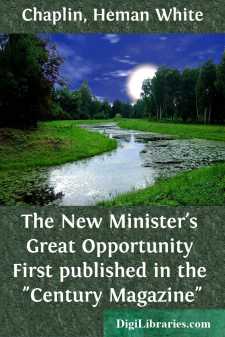Categories
- Antiques & Collectibles 13
- Architecture 36
- Art 48
- Bibles 22
- Biography & Autobiography 813
- Body, Mind & Spirit 142
- Business & Economics 28
- Children's Books 17
- Children's Fiction 14
- Computers 4
- Cooking 94
- Crafts & Hobbies 4
- Drama 346
- Education 46
- Family & Relationships 57
- Fiction 11829
- Games 19
- Gardening 17
- Health & Fitness 34
- History 1377
- House & Home 1
- Humor 147
- Juvenile Fiction 1873
- Juvenile Nonfiction 202
- Language Arts & Disciplines 88
- Law 16
- Literary Collections 686
- Literary Criticism 179
- Mathematics 13
- Medical 41
- Music 40
- Nature 179
- Non-Classifiable 1768
- Performing Arts 7
- Periodicals 1453
- Philosophy 64
- Photography 2
- Poetry 896
- Political Science 203
- Psychology 42
- Reference 154
- Religion 513
- Science 126
- Self-Help 84
- Social Science 81
- Sports & Recreation 34
- Study Aids 3
- Technology & Engineering 59
- Transportation 23
- Travel 463
- True Crime 29
Saint Patrick 1887
Categories:
Description:
Excerpt
One of the places which they point out on Ship Street is the Italian fruit-shop on the corner of Perry Court, before the door of which, six years ago, Guiseppe Cavagnaro, bursting suddenly forth in pursuit of Martin Lavezzo, stabbed him in the back, upon the sidewalk. "All two" of them were to blame, so the witnesses said; but Cavagnaro went to prison for fifteen years. That was the same length of time, as it happened, that the feud had lasted.
Nearly opposite is Sarah Ward's New Albion dance-hall. It opens directly from the street There is an orchestra of three pieces, one of which plays in tune. That calm and collected woman whom you may see rocking in the window, or sitting behind the bar, sewing or knitting, is not a city missionary, come to instruct the women about her; it is Sarah Ward, the proprietress. She knows the Bible from end to end. She was a Sunday-school teacher once; she had a class of girls; she spoke in prayer-meetings; she had a framed Scripture motto in her chamber, and she took the Teachers' Lesson Quarterly; she visited the sick; she prayed in secret for her scholars' conversion. How she came to change her views of life nobody knows,—that is to say, not everybody knows. And still she is honest. It is her pride that sailors are not drugged and robbed in the New Albion.
A few doors below, and on the same side of the street, is the dance-hall that was Bose King's-. It is here that pleasure takes on its most sordid aspect. If you wish to see how low a white woman can fall, how coarse and offensive a negro man can be, you will come here. There is an inscription on the bar, in conspicuous letters,—"Welcome Home."
By day it is comparatively still in Ship Street. Women with soulless faces loll stolidly in the open ground-floor windows. There are few customers in the bar-rooms; here and there two or three idlers shake for drinks. Policemen stroll listlessly about, and have little to do. But at nightfall there is a change; the scrape of fiddles, the stamp of boot-heels, is heard from the dance-halls. Oaths and boisterous laughter everywhere strike the ear. Children, half-clad, run loose at eleven o'clock. Two policemen at a corner interrogate a young man who is hot and excited and has no hat. He admits that he saw three men run from the alley-way and saw the sailor come staggering out after them, but he does not know who the men were. The policemen "take him in," on suspicion.
It is here that the Day-Star Mission has planted itself. Its white flag floats close by the spot where Martin Lavezzo fell, with the long knife between his shoulder-blades. Its sign of welcome is in close rivalry with the harsh strains from Sarah Ward's and the lighted stairway to Bose King's saloon. It stands here, isolated and strange, an unbidden guest. It is a protest, a reproof, a challenge, an uplifted finger.
But while, to a casual glance, the Day-Star Mission is all out of place, it has, nevertheless, its following. On Monday and Thursday afternoons a troop of black-eyed, jet-haired Portuguese women, half of whom are named Mary Jesus, flock in to a sewing-school. On Tuesdays and Fridays American, Scotch, and Irish women, from the tenement-houses of the quarter, fill the settees, to learn the use of the needle, to enjoy a little peace, and to hear reading and singing; and occasionally the general public of the vicinity are invited to an entertainment.
It was a February afternoon; at the Mission building the board were in monthly session....








